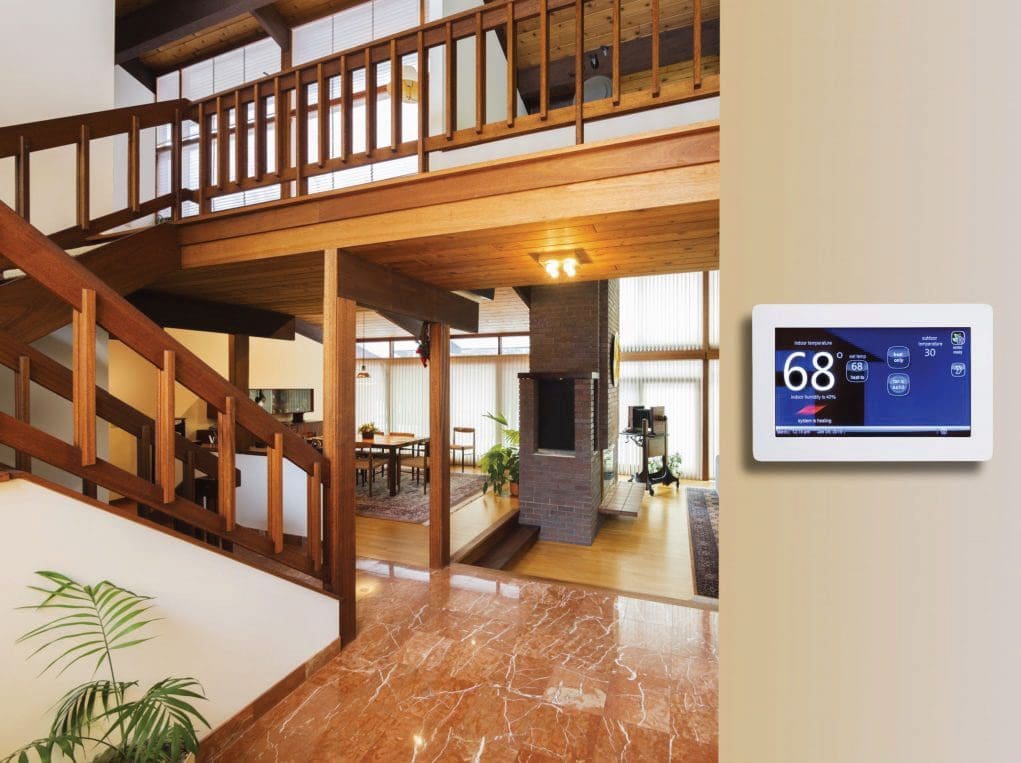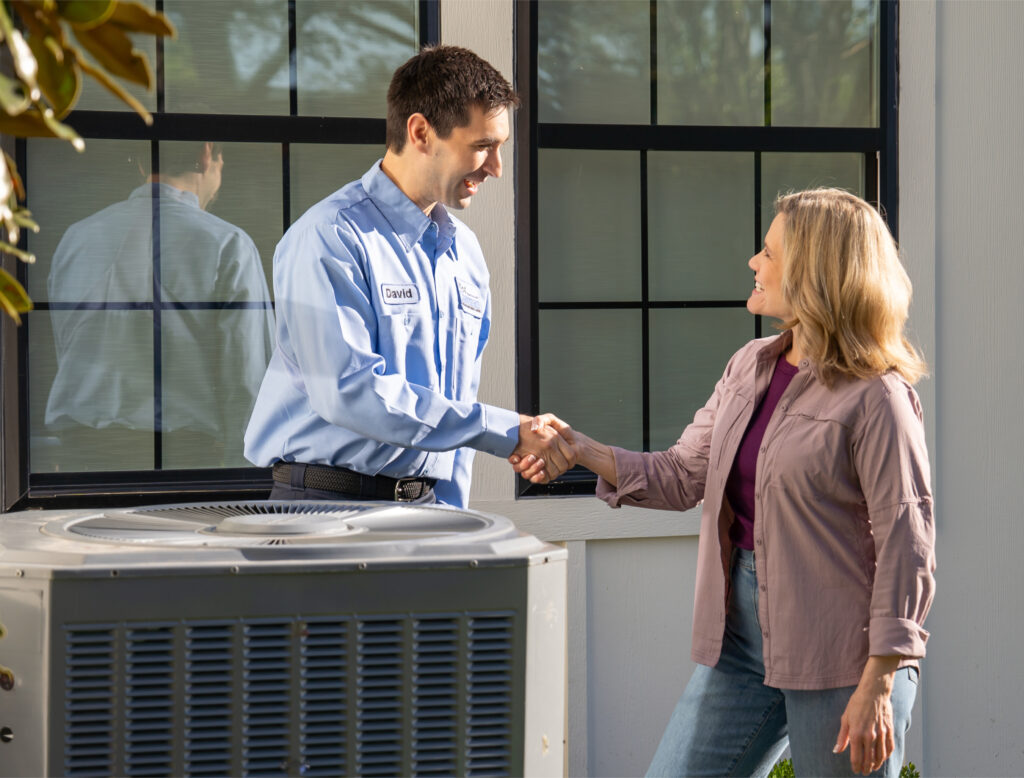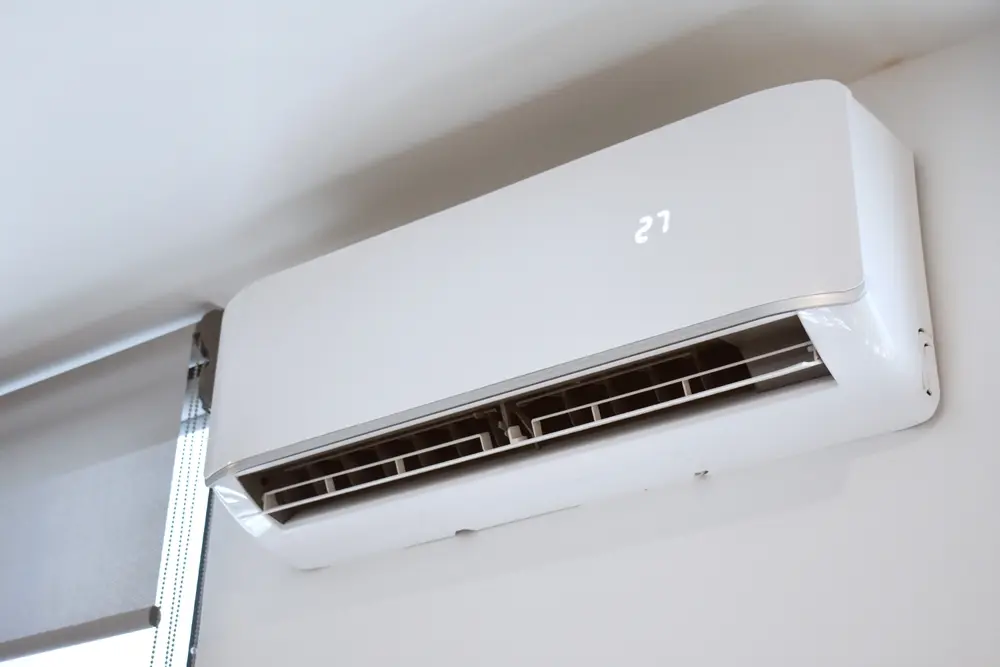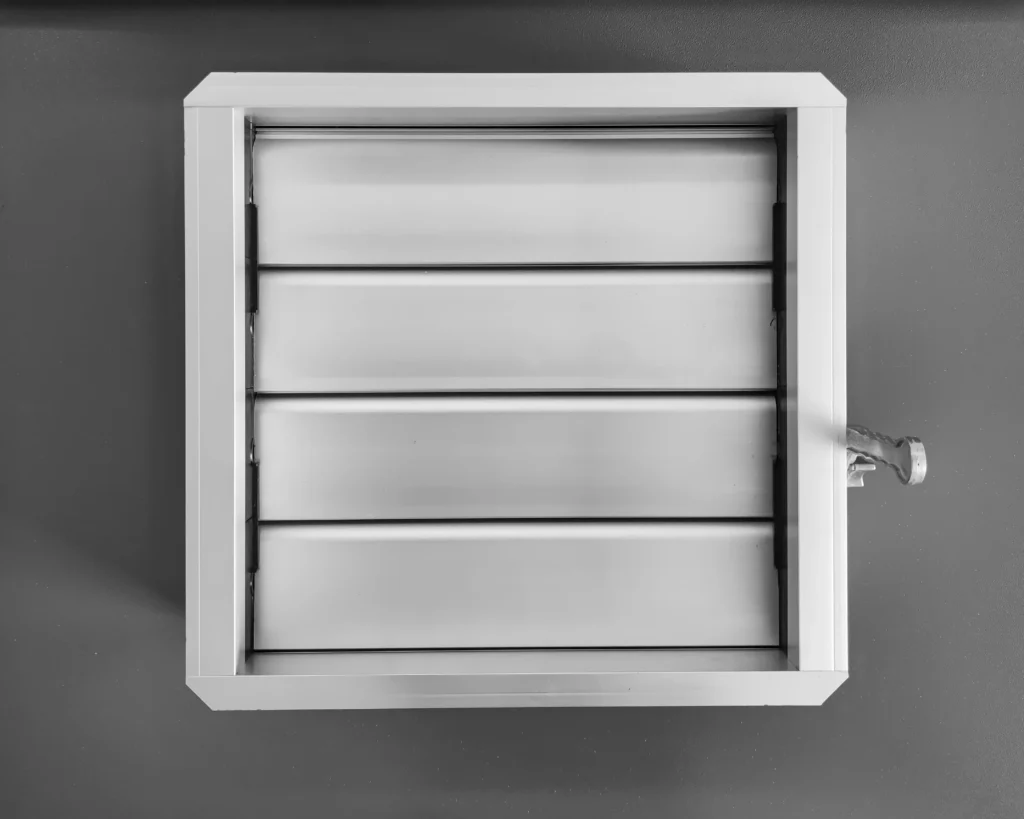
Blog
Best Thermostat Temperatures & Settings for Winter & Summer

Throughout the year in Indianapolis and across Central Indiana, the temperature will fluctuate from hot and humid in the summer to frigid and below-freezing in the winter.
Finding the recommended thermostat settings for summer and winter can be tricky. If you’re like most people, you want to strike the right balance between staying comfortable and saving on energy costs. This can be especially tough in Indiana’s fluctuating climate.
Whether you're trying to stay cool during muggy summers or warming up during icy winters, setting your thermostat correctly makes a measurable difference. Here's how to take control of your indoor climate without sacrificing comfort or your budget.
Recommended Thermostat Settings
The recommended thermostat settings for summer and winter depend on the time of day and whether you're at home or not. Smart programming and making minor adjustments throughout the day can save you up to 10% a year on heating and cooling bills, according to the U.S. Department of Energy.
What Temperature Should You Set Your Thermostat in Summer?
When it’s hot outside, your thermostat setting can impact how hard your air conditioner works—and how much you spend each month. Here’s what we recommend for your summer thermostat setting:
- When You're Home
Set your thermostat to 78°F (25.5°C) during the day. This is ideal for comfort and efficiency, especially when using fans to improve circulation.
- When You're Away from Home
Increase the setting to 85°F (29.5°C) when you’re away. This might sound high, but we promise it’s not. Setting the temperature at a higher setting while you’re away prevents unnecessary strain on your air conditioning unit.
- When You're Sleeping
Lowering the temperature slightly to 78°F can improve sleep quality without drastically increasing energy usage. Pair this with ceiling fans or programmable thermostat adjustments for added comfort.
What Temperature Should You Set Your Thermostat in Winter?
As temperatures drop in winter, it’s tempting to crank up the heat, but staying efficient helps you save during the winter. Here’s what you can do to maintain your winter thermostat setting:
- When You're Home
Keep the thermostat at 68°F during the day. This is the best temperature to stay comfortable without overworking your heating system.
- When You're Away from Home
Set your thermostat between 60 and 62°F when you’re away. This helps save energy while keeping pipes from freezing. If you’re away for more than a day, a temperature of 55°F is recommended.
- When You're Sleeping
Setting the temperature to 65°F promotes better sleep and can reduce your energy bill, especially when using flannel sheets or heated blankets.
Heat Pumps Operate Differently in Heating Mode
If your home uses a heat pump, the rules change slightly. These systems work more efficiently at steady temperatures, so large temperature fluctuations can cause them to work harder and reduce their efficiency.
It is generally not recommended to use a programmable thermostat with a heat pump for this reason. However, new programmable thermostats are now available that are specifically designed for heat pumps.
Either way, the best method to get the most out of your heat pump is to maintain a moderate setting.
Best Temperature to Set Thermostat to Save Money
Adjusting your thermostat is one of the most effective ways to save money on your energy bills, regardless of the season.
Below is a quick-reference guide with the ideal temperature ranges for both summer and winter:
| Season | At Home | Away | Asleep |
|---|---|---|---|
| Winter | 68°F | 60–62°F | 65°F |
| Summer | 78°F | 85°F | 78°F |
Energy-Saving Tips
You can stretch your HVAC system’s performance and reduce monthly bills with a few practical adjustments around the house. Here’s how:
- Install a Programmable or Smart Thermostat - A programmable thermostat automatically adjusts your home’s temperature based on your schedule. Many models allow you to control temperatures through your smartphone.
- Seal Windows and Doors - Drafty doors and leaky windows can let conditioned air escape. Use weather stripping, caulk, or thermal curtains to lock in comfort and avoid overworking your HVAC system.
- Maintain Your HVAC System - Dirty filters, clogged vents, and worn components all reduce efficiency. Scheduling regular maintenance appointments helps extend the life of your system and prevents costly repairs.

How to Use a Programmable Thermostat Effectively
Using a programmable thermostat correctly can significantly reduce your energy use without sacrificing comfort. But to reap the most benefits, it’s important to program it correctly.
According to ENERGY STAR, these best practices will help your programmable thermostat work for you, not against you:
- Install your thermostat away from heat sources.
Avoid placing your programmable thermostat near windows, skylights, fireplaces, lamps, or heating and cooling registers.
- Set the thermostat to energy-saving temperatures for extended periods.
Maintaining the same energy-saving temperature settings during the day when no one is home or while you are asleep is best.
- Use the “hold” button only when necessary.
Keeping your settings at a constant energy-saving temperature while you are away for more than a day is best. Use the “hold” button when going on vacation or away for the weekend.
- Don’t constantly adjust the settings.
Constantly adjusting the settings overrides pre-programmed settings. These frequent manual changes cause your system to work harder and increase energy costs.
- Use a programmable thermostat for each zone in your home.
Zoned heating and cooling systems work best when each area has its own programmed thermostat.
- Change your batteries annually.
Low battery levels can cause your system to stop following the programmed schedule or fail altogether. Upgrading to a smart thermostat can simplify this process.
Many models offer voice control, smartphone access, and even geofencing, which adjusts the temperature when you leave or return home.
Take Control of Your Comfort and Energy Costs with Chapman
Indiana weather is nothing if not unpredictable, but your indoor comfort doesn’t have to be. By understanding the recommended thermostat settings for summer and winter, you can enjoy a more energy-efficient home, lower utility bills, and better year-round comfort.
Whether you need a new programmable or smart thermostat, an HVAC system tune-up, or a zone control system for more targeted comfort, the experts at Chapman Heating, Air Conditioning, Plumbing & Electrical are here to help. We’ve served central Indiana for over 40 years, helping people stay comfortable in every season.
Take charge of your comfort and energy bills. Contact Chapman today for guidance and expert service.









